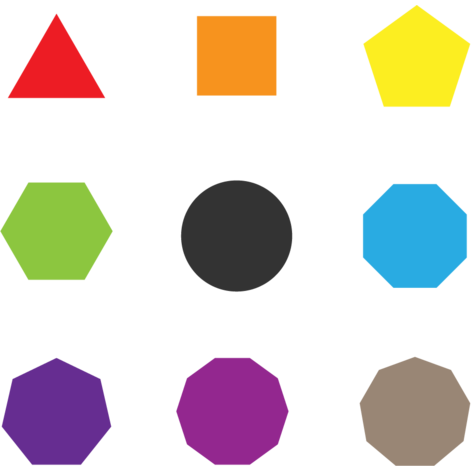Lessons from Our Own History: A Political Story with a Moral
The Then:
"I feel threatened by my own fear and the reality that 50-plus % of Colorado would discriminate against me and gay/lesbian/bisexual persons."
"It's very disgruntling that hearing that over half the people in this god-forsaken state hate me, and don't even know me!"
These were but two of hundreds of responses to a research survey examining the reactions of lesbian, gay, and bisexual (LGB) Coloradans not long after the state's voters endorsed 1992's Amendment 2, a referendum designed to effectively legalize discrimination against them. Taken collectively, the survey responses suggested deep wells of sadness, fear, anger, and isolation among LGB people who saw their neighbors vote against their rights. It is not an exaggeration to say that researchers were reduced to tears by the anguish in the responses. It was a horrible moment for queer people.
Despite the decidedly negative political, social, and emotional impact of Amendment 2, it was the beginning of many very positive changes for LGB people in Colorado and beyond. That, of course, was never the intention of the anti-LGB forces that initiated the referendum; nor was it the intention of the voters who endorsed it. And the positive effects of the amendment are not owed to either its initiators or its electoral supporters. Rather, the credit goes to LGBTQ+ people and allies who took a really terrible moment and channeled their energies into the larger movement for queer and trans rights.
The Later
Though polling had suggested that Amendment 2 would go down to defeat at the polls, it garnered 53% of the popular vote. But a small cadre of LGBTQ+ people and allies had a plan to sue the state if Amendment 2 passed. That group of people—a combination of straight and queer--went to work to have the Amendment enjoined. The site of this battle over LGBTQ+ rights had shifted from the electoral stage to the judicial one. In addition to individual plaintiffs, the suit included municipalities and school districts in Colorado.
As Amendment 2 was making its long trip to the U. S. Supreme Court, LGBTQ+ people and their allies began fighting on other fronts.
LGBTQ+ people in this state created a greater sense of community. For the first time, Colorado built an ongoing state-wide organization that began a concerted effort to change the experience of queer and trans people. In addition, local organizations of queer and allied people sprang up in towns small and large. Most of these towns had never had a single organization working for the rights of this population. LGBTQ+ people came out of their closets. They found one another and strategized about how to change the laws and the culture. In Boulder, the signs of change were everywhere. This change developed—sometimes quickly and sometimes gradually—into such outcomes as a feminist and queer bookstore, a city domestic-partnership registry, a campus queer center, open and affirming faith communities, a queer and trans community center, a queer studies certificate program at CU, the city's signing on as a plaintiff in the Amendment 2 suit, and the list goes on and on.
LGBTQ+ Coloradans grew in their understanding of what sex- and gender-based bias was. They came to understand what had felt like a personal problem was actually a social problem. That problem needed to be confronted collectively. People told their stories, they got active, they gave money, they made culture. Activism blossomed. Queer and trans people's sense of themselves changed; they felt stronger and more empowered. The more they worked with other LGBTQ+ people to counter the bias in the environment, the more they were able to let go of the lies and stereotypes about themselves that they had internalized. That inspired still more folks to leave their closets.
As LGBTQ+ groups became more visible, it became increasingly clear that this community came from all parts of the landscape. Many queer and trans people had the experience of seeing the value of the incredible diversity among LGBTQ+ people. As LGBTQ+ people organized and developed a better understanding of bias against their community, many grew in their understanding of the commonalities and differences between the bias experienced by LGBTQ+ folks and the biases that were part of the lives of other marginalized groups.
Countless heterosexual and cisgender people in the state wanted to be clear that they were not supportive of Amendment 2, so they began looking for ways to get involved. Some people worked in their own places of employment to make changes. Others started PFLAG chapters where none had existed before. The face of Colorado was changing in countless ways.
And, finally on May 20, 1996, the U. S. Supreme Court handed down its ruling in the Amendment 2 case. The Court declared the amendment unconstitutional, saying that Colorado voters could not make LGB people strangers to its laws. Perhaps just as importantly, the Court issued a ruling that spoke of LGB people as actual people with dignity and rights. It was the first Supreme Court ruling to do so, the first ruling to treat LGB people as something other than people with socially and legally unacceptable behavior. It was, to say the least, a landmark decision.
The Moral of this Story
Just as Amendment 2 was not the end of the story, no political event is the end of the story. No matter how bad such events may make us feel, they await the next round. It is up to us to create the next part of the 303 Creative story. We can use what happened with Amendment 2 as inspiration. History can be one of our teachers. The 303 Creative Supreme Court decision is just a moment. It's not the movement. We create the movement. Let's keep moving.
-Glenda Russell for Advocacy and Public Policy Committee, Out Boulder County

